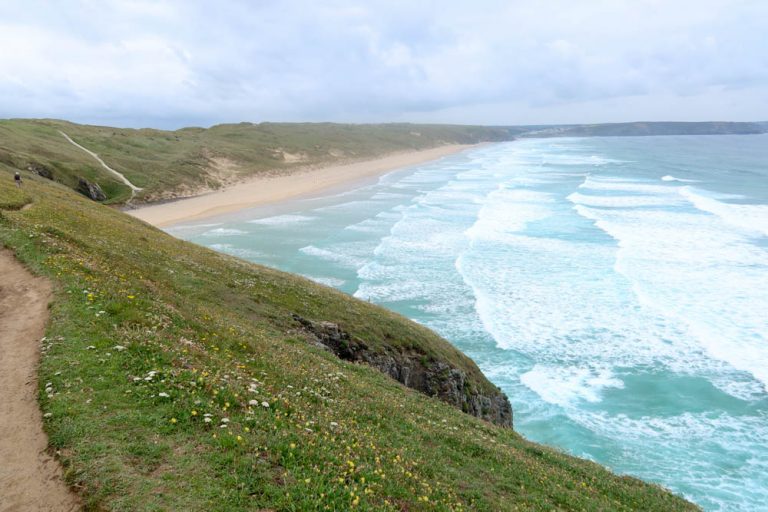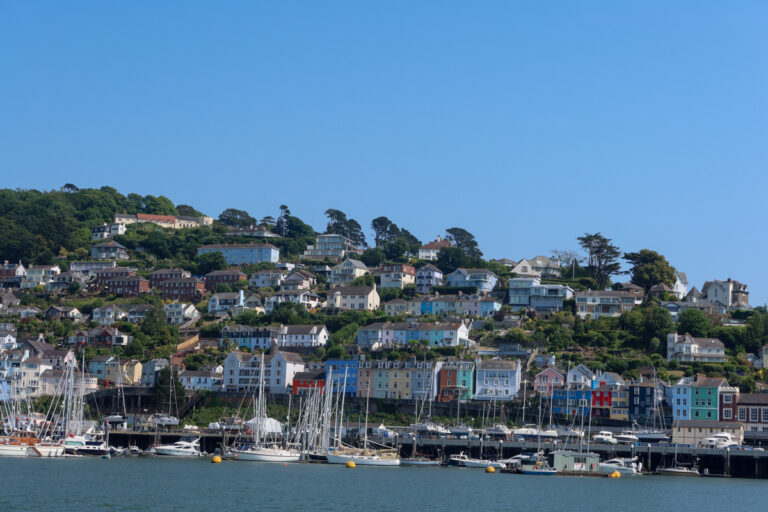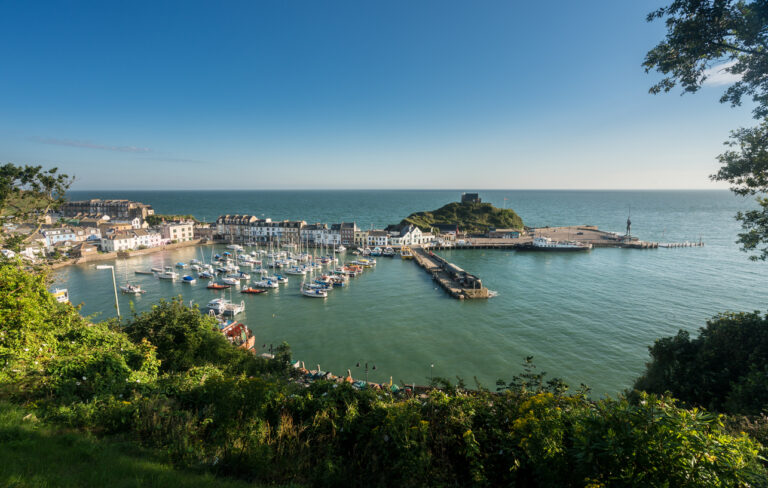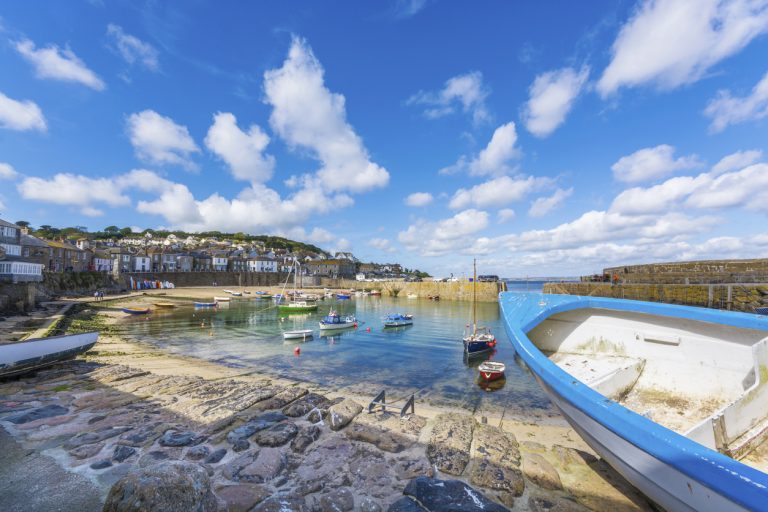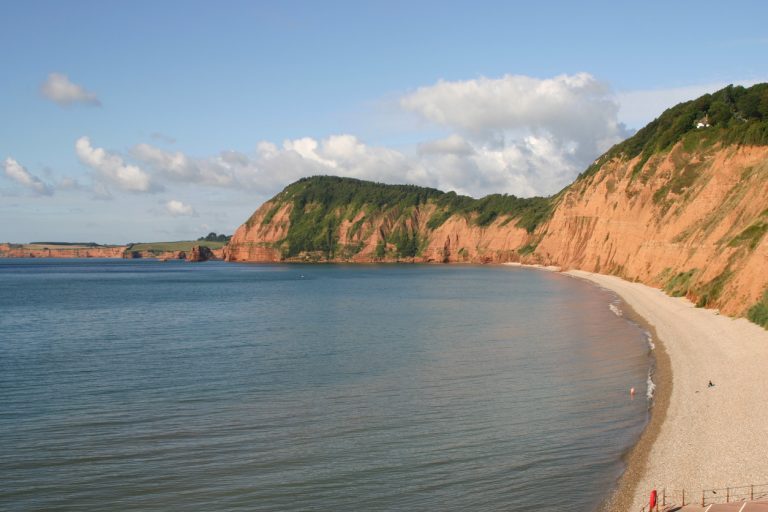18 top things to do in Totnes, South Devon (2024 guide)
If you’re looking for things to do in Totnes, this blog post is here to help!
I’m a Devon local, and historical Totnes is one of my favourite towns in the county. In fact, if it had a beach, I would have seriously thought about moving here!
Its history is palpable, but what makes the town shine today is its vibrant modern cultural scene.
This south Devon town is inland, but it is still one of the most popular places in Devon. However, many tourists only see the castle and miss some of its other gems!
That’s why I’ve put this Totnes attractions list together – to help you see it all and make sure you don’t miss out on anything.
I guarantee that you’ll love Totnes!
Things to do in Totnes
There’s so much to do in this historic market town, from exploring the historic castle to browsing its independent boutiques to taking in nature on the outskirts. Here are the best things to do in Totnes!
1. Totnes Castle

A traditional Norman motte and bailey castle, Totnes Castle is one of the most impressive Devon attractions.
I’d recommend making it your first point of call as soon as you get to the town!
Built shortly after the Norman conquest by Juhel, who was in William the Conquerer’s army, Totnes Castle is surrounded by a 13th-century shell keep.
It passed into the ownership of Henry, son of the Earl of Cornwall then the de la Zouche family and later to Sir Richard Edgecombe of Cotehele.
Italian prisoners of war were held here in World War Two, and you can still see graffiti by them on the trees.
Other points of interest are the tranquil grounds with the historic moat and of course, the historic castle itself with amazing views over the town.
Click here to buy tickets for Totnes Castle or join English heritage here.
2. Totnes Museum
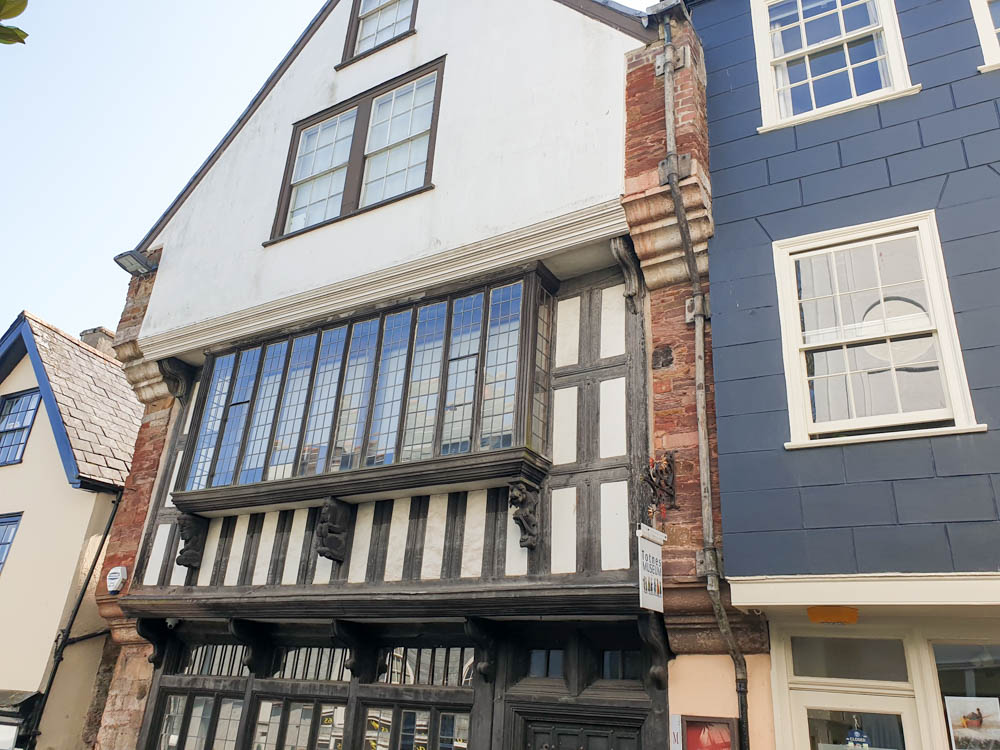
Want to get to know Totnes’s history a little better?
Head to Totnes Museum.
Formerly known as Totnes Elizabethan House Museum because it is located in a Tudor house, this museum is a treasure trove of information about the historic town – and there’s plenty to learn.
It was once one of the richest towns in England, and legend has it that the founder of Britain first touched land here!
As well as exhibitions about the town and work from local artists, enjoy some historical features of the Totnes Elizabethan House Museum, including its kitchen, a nursery and corridors.
There are also areas that replicate a Victorian pharmacy and shop.
Finally, visit the Babbage Room to learn about Charles Babbage, an inventor who is thought to be the father of computing, who studied in Totnes.
3. Totnes Fashion & Textile Museum
The Totnes Fashion & Textile Museum is another place to visit in Totnes on a rainy day – or anytime!
With exhibitions ranging from period costumes to fashion in the 21st century, it’s a must-visit place for any stylish tourists – or people who are interested in how fashion has changed through the centuries.
Totnes Fashion Museum is open from Tuesday to Friday in the summer, from 11:00am to 5:00pm. If you want to visit the museum at another time, you can make an appointment.
4. Totnes Guildhall
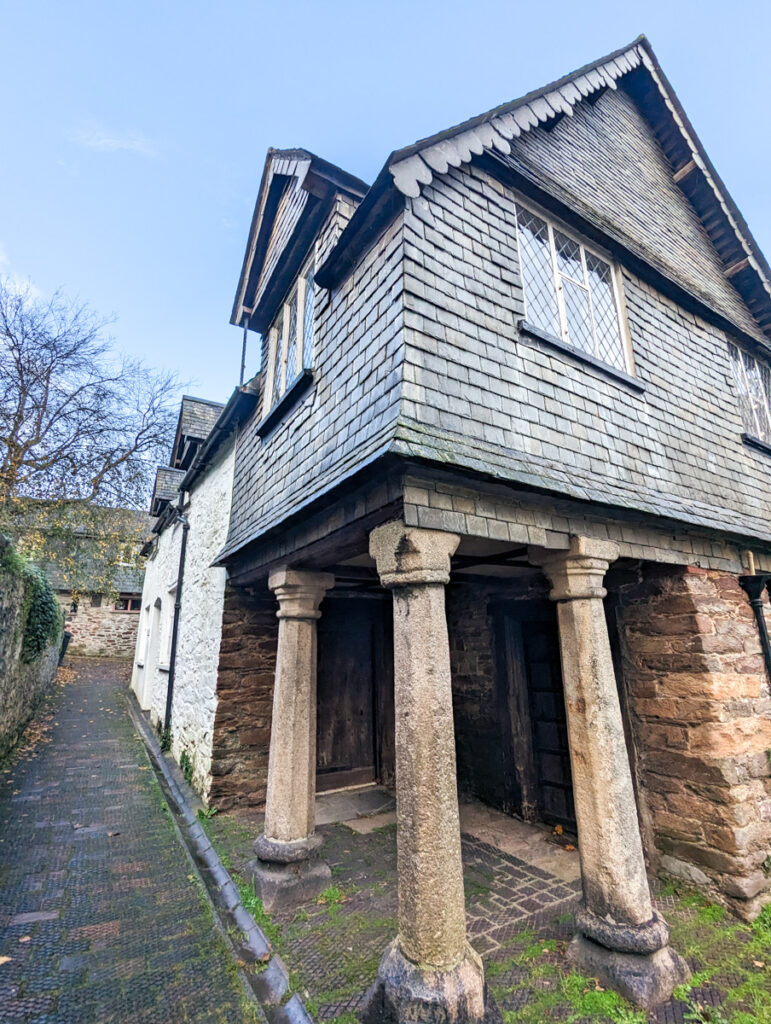
See history come alive at Totnes Guildhall.
This site began life as an 11th-century Benedictine priory, then turned into a medieval hall.
The guildhall has been at the heart of life in the town for centuries and is well worth visiting while you’re here!
It was originally built in 1088, but most of it was destroyed under the dissolution of the monasteries.
However, the guildhall was built onto the remains in 1553, and it has since been used for multiple purposes.
Over the centuries, it has been Totnes’ goal, a school, a magistrates court and is now the Council Chambers for Totnes Town Council.
Oliver Cromwell even plotted some of the Civil War here!
It’s usually open Monday to Friday in the summer months (check out up-to-date opening times here).
5. See Brutus Stone
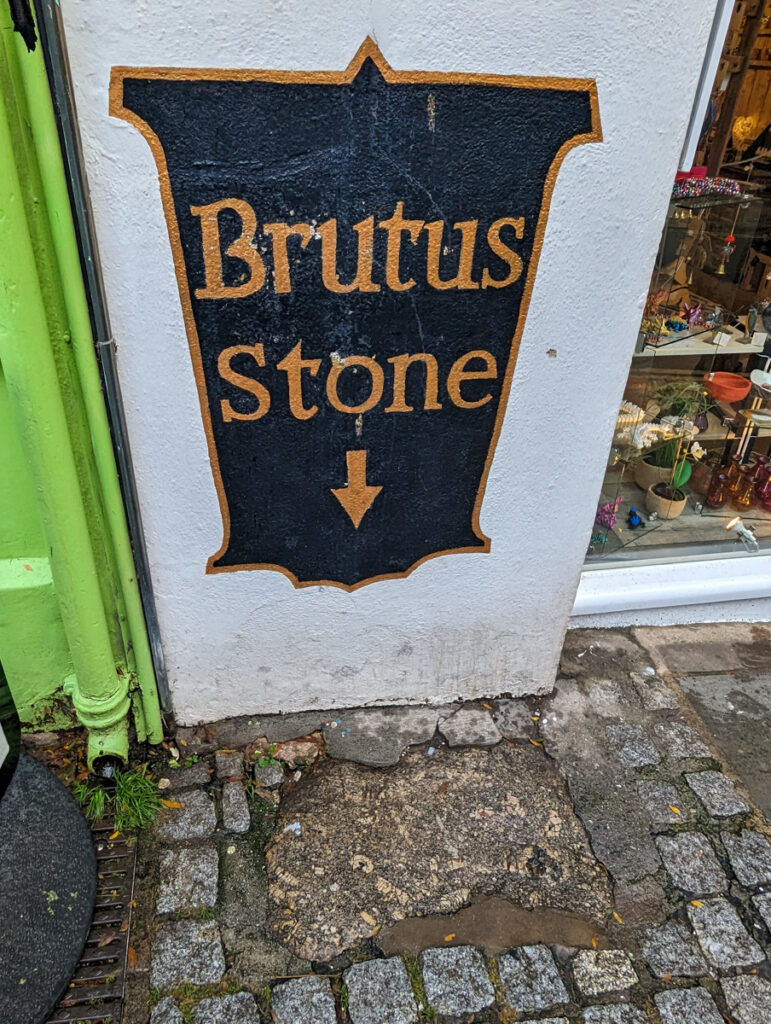
The whole of Britain was allegedly founded in Totnes!
Brutus of Troy apparently left Troy when it fell and travelled to the UK, becoming the first official Briton.
Brutus Stone allegedly marks where he took his first step onto British soil – he’s quoted to say “Here I stand and here I rest. And this town shall be called Totnes”.
Not many people believe this story, largely because Totnes’ location is not by the sea and the stone is up a steep hill, much further than river levels have ever risen – but it’s a quirky attraction to check out!
You’ll find it on Fore Street, next to The Wild Fig Cafe (which is an excellent spot for lunch).
6. Walk under East Gate
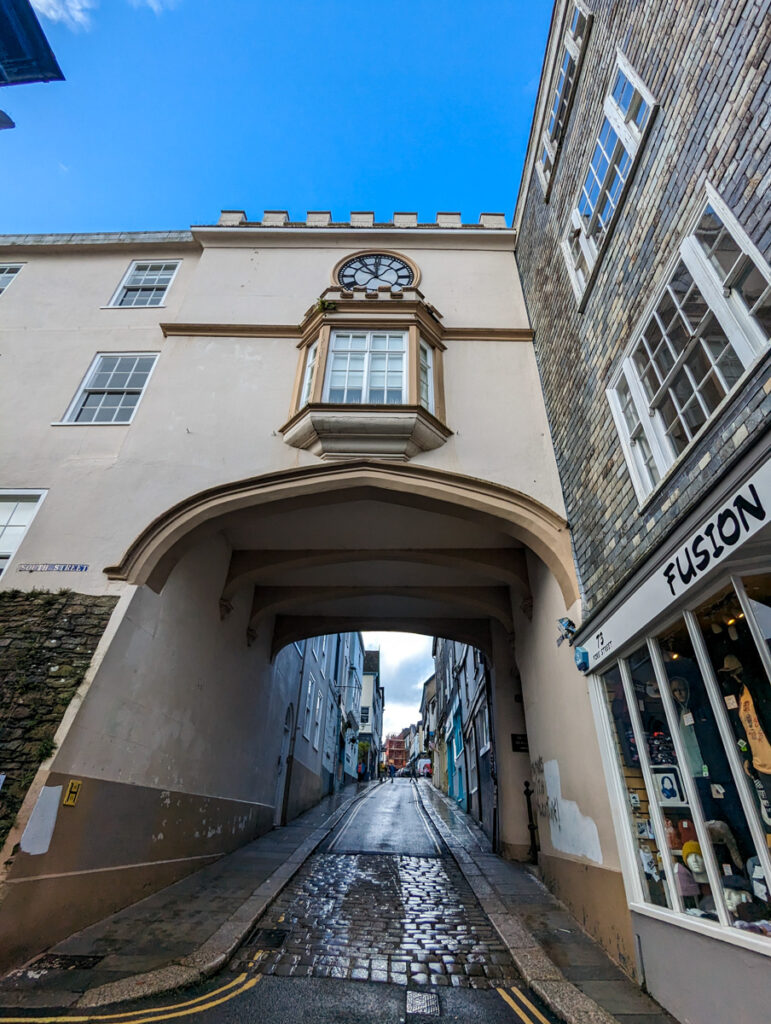
Arching over Fore Street, East Gate used to be the entrance to the Medieval town of Totnes.
Unfortunatley, a large fire in 1990 damaged it, so not all that much of its Medieval exterior remains, but it has been well-restored since.
7. Shop at the many independent stores
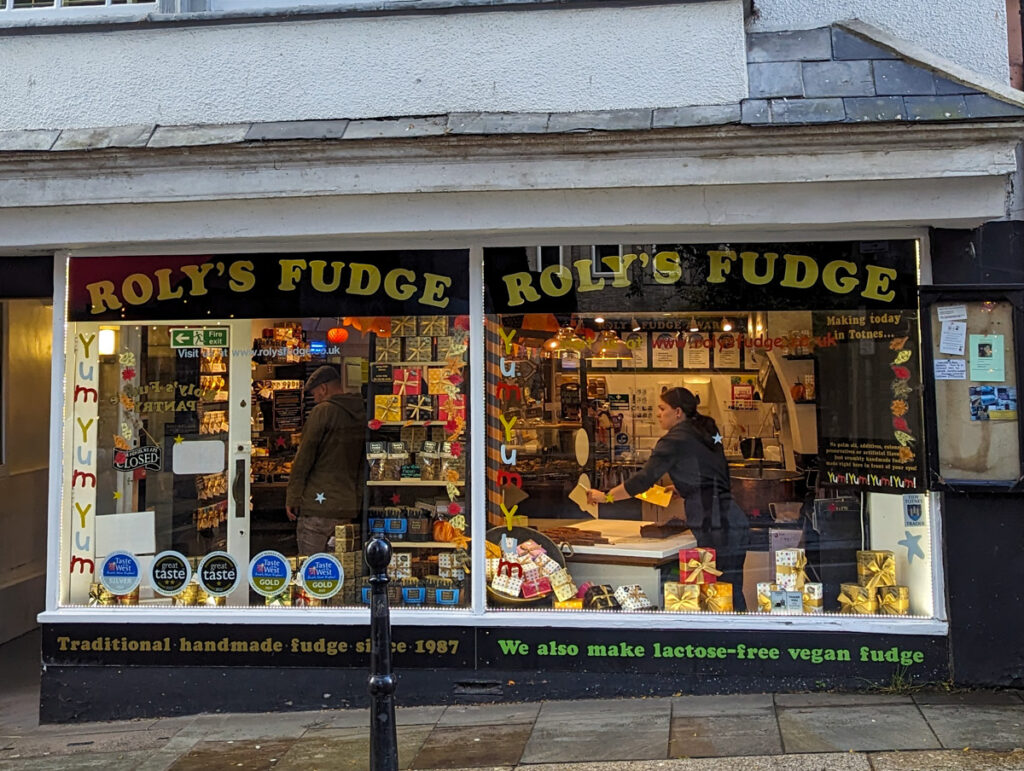
Whether you’re Christmas shopping or looking for home decorations, Totnes is a hive of independent shops and boutiques.
Many of the stores in Fore Street and beyond are independent or smaller brands.
My favourites include:
- Roly’s Fudge Pantry: An establishment in Devon, Roly’s Fudge offers traditional West Country fudge – if you want an edible souvenir, this is your place!
- China Blue: A popular pottery shop (it’s a hit with kids!) where you can decorate your own china.
- Out of the Blue Gift Shop: A family-run store where you’ll find all sorts of one of a kind presents and mementoes.
- Revival: A fantastic store for fashionistas selling new and second-hand clothing.
- Castle Books: In the shadow of Totnes Castle sits Castle Books, a lovely second hand bookstore.
8. Take a ride on the South Devon Railway
The South Devon Railway (not to be confused with the Dartmouth Steam Railway) connects Buckfastleigh to Totnes Riverside, traversing through some of the most beautiful scenery in Devon.
This traditional Great Western Railway steam train feels like a step back in time.
Take in vistas of Dartmoor and the lush River Dart as you chug along.
In Buckfastleigh, browse their museum, display of steam and diesel locomotives, and the gift and model shop.
You can also visit Dartmoor Otters and Buckfast Butterflies, which is near Buckfastleigh station, or walk the mile to Buckfast Abbey, a fascinating working abbey that’s famous for being where Buckfast Wine is created.
The train also stops at Staverton, a country town that looks like a time capsule from a century ago.
Here, there are some beautiful riverside walks and a 15th-century bridge.
Check out more information on the South Devon Railway website.
9. Take a boat trip to Dartmouth
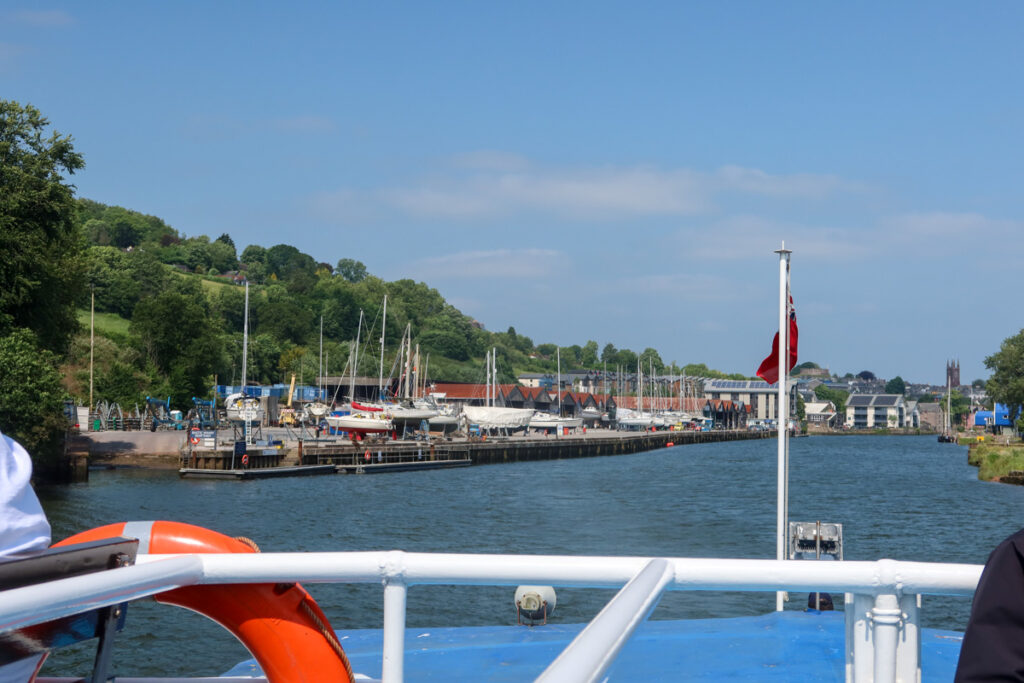
The River Dart connects Dartmouth and Totnes, and you can explore it with the Dartmoor River Boat Company.
This cruise covers nine miles and takes 90 minutes each way.
On it, pass by Agatha Christie’s Greenway Estate and the Sharpham Estate and vineyards.
With an interesting commentary learn funny stories from villages like Dittisham (where Kate Winslet has a house) and Stoke Gabriel.
In Dartmouth, see the castle and harbour, returning to Totnes either via the cruise or by taking a bus.
You could also purchase a Round Robin Ticket from the Dartmouth Steam Railway and River Boat Company which includes the boat between Totnes and Dartmouth, a ferry from Dartmouth to Kingswear, the Kingswear to Paignton Steam Train (click here for my full guide) and a bus transfer from Paignton to Totnes.
10. Explore St Mary’s Church
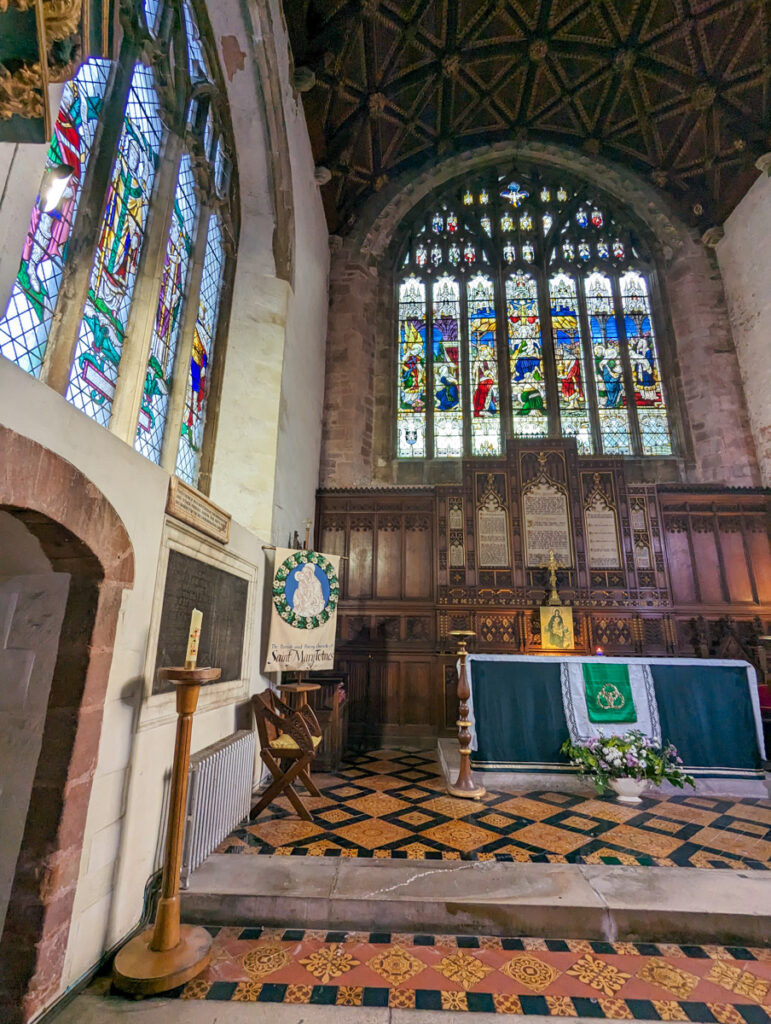
Tucked away to the side of Fore Street, you’ll find St Mary’s Church.
The present building dates back 500 years, but a monastery and an even earlier church occupied this site 1,000 years ago.
In 1088, St. Mary’s began its life as a local cell for French Benedictine monks, and it was redeveloped in the 13th and 15th centuries. The rood screen, which is still present in the church today, was made from Beer Stone.
The dissolution of the monasteries in the 1500s meant the destruction of many of the churches decorations, but it was then restored in the 18th and 19th centuries.
It remains one of the most fascinating historic buildings in Totnes and is home to the elaborate Heritage Map of Totnes on the floor of the North Aisle, a vintage-looking map that depicts various locations that are important to the town’s history.
11. Follow the Totnes Town Trail
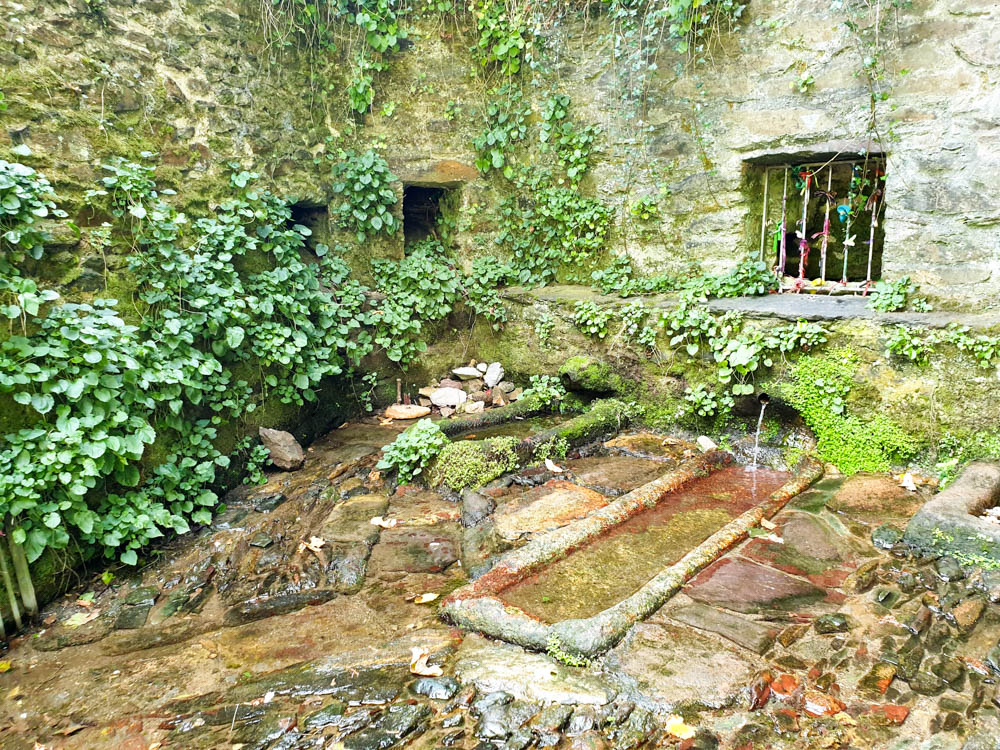
Learn about Totnes’s history and heritage by taking the Totnes Town Trail.
This is a free self-guided walking tour run by Visit Totnes with stops at some of the town’s most interesting places.
The trail covers significant points, including:
- Totnes Castle, the main landmark of Totnes town.
- St Mary’s Church which was part of the Benedictine priory of Totnes, but was rebuilt in the 15th century.
- The guildhall which has a fascinating 1000 years of history.
- Brutus Stone, where Totnes was allegedly founded!
- Seven Stars Hotel dates back to the 17th century but was built on the site of a medieval inn.
- Wills Obelisk, which is commemorated to William Wills, who explored Australia and was born in Totnes town.
- Leechwell, which is a natural spring with healing properties.
Here’s the Visit Totnes website with the route instructions and information.
12. Hike on the Dart Valley Trail
One of Totnes’s main draws is its proximity to the Dart Valley Trail.
This is a walking route from Totnes to Dartmouth, passing through beautiful riverside scenery as it winds down the banks.
The entire walk is 9 miles or 14.5 kilometres and is classed as ‘hard’.
If you don’t want to do the full distance, you can do a circular walk around Totnes – here are some directions for such a walk.
Cycling is also permitted in some sections.
If you do the full hike, you can easily return to Totnes by bus.
13. Dine at one of the waterfront cafes
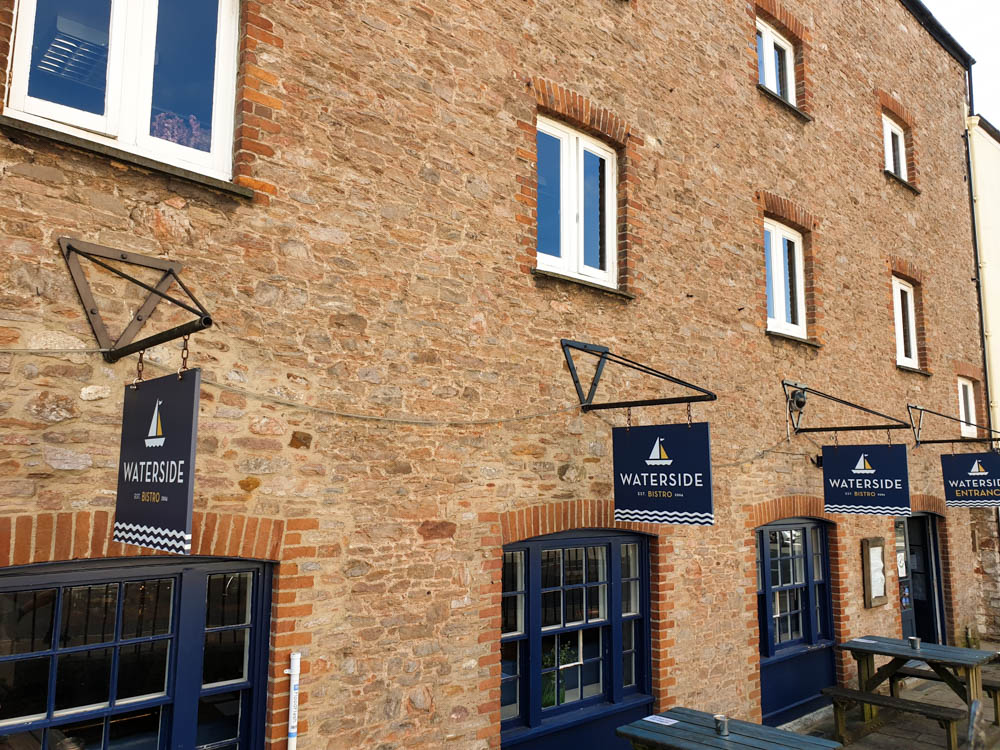
One of the best ways to soak Totnes’s glorious waterfront in is to dine at cafes and restaurants along the river.
Waterside Bistro is a lovely little tapas and seafood restaurant.
It has a wonderful courtyard overlooking the river and inside seating for when the weather isn’t so good.
You can pop into Waterside Bistro for a light bite, a drink or a full meal.
For more details and reservations, click here.
14. Totnes Good Food Market
Another way to enjoy Totnes’ fantastic food scene is by going to the Totnes Good Food Market!
As the name suggests, this is a chance to enjoy some delicious local food.
It runs every third Sunday of the month and has 60+ stalls from Devon and the West Country, serving delicious cheese, chutney, cider, jam… and plenty more!
If you are in Totnes when it is on, it is not to be missed!
15. Sharpham Vineyard
As well as lots of delicious food, there is local wine near Totnes!
If you want to try some English wines, I recommend visiting Sharpham Vineyard, which is a 13-minute drive from Totnes centre (for public transport, you’ll need to take the Gold Bus towards Paignton to Parkers Arms Walk and then the 125 towards Stoke Gabriel to Sandridge Barton – this will take around an hour).
Sharpham wine was one of the first English wines to be produced in this area – the vineyard dates back to 1981!
You may think that England doesn’t have much to offer when it comes to wine – but the cooler climate of South Devon has a longer growing season and can produce some excellent wine varieties!
Sharpham has won countless awards for its sparkling, red, rose and white wines. They also make delicious cheese.
Simply take a walk through their vineyard, enjoying the scenery, or do a self-guided wine-tasting flight, a guided tasting or a tour and tasting.
All experiences apart from the independent walk need to be booked in advance.
16. Berry Pomeroy Castle
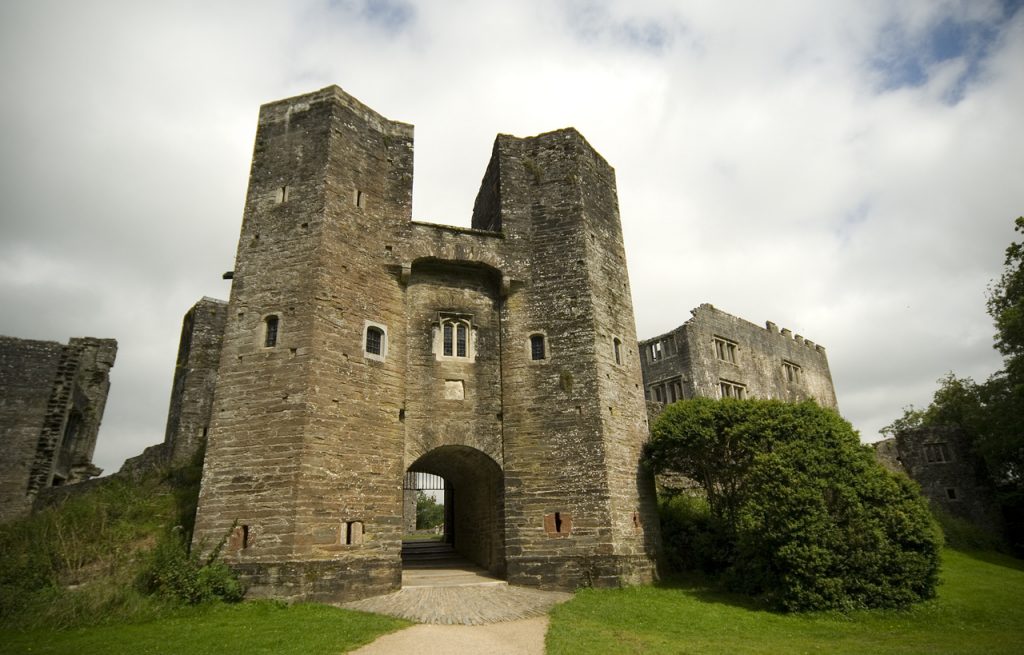
The nearby Berry Pomeroy Castle is another English Heritage property that is just a five-minute drive from Totnes town centre.
Parts of Berry Pomeroy date back to the 15th century when it belonged to the Pomeroy family, but the castle you see today mainly dates back to the 16th century when it belonged to the Seymour family.
After the death of Henry VIII and the succession of Edward VI, the Seymours were perhaps the most influential family in the country.
Jane Seymour was Edward VI’s late mother, and her brothers used this connection to influence the young king, who was only nine when he began his reign.
Although this castle was reconstructed in 1560 after Edward VI died and during the reign of Catholic Mary I, the castle still exudes a lot of the wealth you’d expect from such an influential family. In fact, the Seymours planned to make it the most magnificent manor house in Devon.
Its ambitions were never properly met, and it was all but abandoned by the 18th century.
This resulted in it becoming a breeding ground for ghost stories – which you’ll be able to hear about on the audio tour!
It is set in stunning gardens and is well worth the trip from Totnes.
Click here to buy tickets for Berry Pomeroy Castle.
Like Totnes Castle, Berry Pomeroy is also managed by the English Heritage. If you visit more than five castles in a year, I would highly recommend getting an English Heritage membership.
You can click here for more information.
17. Dartington Estate
Dartington Estate is a country estate close to Totnes with lush grounds to explore.
These gardens are Grade II* listed and have an impressive history spanning back over 1000 years.
Encompassing 26 acres, here you’ll find sculptures, ancient trees and rare plants.
It’s a lovely place to go for a walk near Totnes!
It’s a 7-minute drive from Totnes, or the gold bus goes most of the way.
18. Go on a day trip

As well as these attractions in and around Totnes, there are a few other excellent day trip destinations a little further afield!
These include:
- Plymouth (40 minute drive/ 30 minute train ride): Learn about the Mayflower, enjoy the coastal scenery or take a boat up the River Tamar, which separates Devon and Cornwall. Check out my full guide.
- Exeter (45 minute drive/ 30 minute train ride): Visit for the majestic cathedral, the beautiful quay and excellent food scene. Here’s my full guide.
- Dartmoor National Park (20+ minute drive/ 20 minute bus ride to Buckfastleigh): Hike on wild moorland to magnificent tors, look out for ponies or drive through charming villages like Widecombe in the Moor. Here’s my full list of things to do on the moor.
- Dartmouth (30 minute drive/ 40 minute bus ride/ 45 minutes on the sightseeing cruise): One of Devon’s most scenic harbour towns, visit Dartmouth Castle, enjoy the lush coastline and learn about its Royal connections! Here’s my full guide.
- Torbay (20 minute drive/ 25 minute bus ride): Visit Paignton and Torquay for attractions like Kent’s Cavern Caves, Torre Abbey and Bygones – in my opinion it’s the best place in Devon for family-friendly attractions.
- Brixham (30 minute drive): A picturesque harbour town with plenty of naval history and the striking Berry Head Nature Reserve. Check out my full guide.
Now you know the best places to visit in Totnes!
Hopefully, this list of things to do in Totnes has helped you plan your trip to this historic English town!
Totnes is a wonderful blend of independent shopping, a compelling history and has plenty of family-friendly activities.
It’s definitely worth a day trip if you’re staying elsewhere in South Devon, or you could base here and spend some time exploring the town and neighbouring region more intimately.
Whatever you choose, I guarantee you’ll love Totnes!

